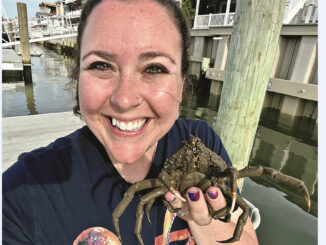
Snow Leopards
By Ellen LambethWithout a doubt, the snow leopard is one of the world’s most mysterious cats. Few people have ever seen one in the wild, even after days or months of searching.
Why is that? For one thing, snow leopards are very rare. For another, they live high up in faraway and rugged mountains of Central Asia. They also live alone (except for mothers with cubs.) And they blend in with their background, move around mostly between dusk and dawn, and are shy around people. No wonder they seem so ghost like!
THE WHOLE PACKAGE
A snow leopard couldn’t be built better for the life it leads. Like many other cats, it stalks its prey and then pounces. For a sneak attack, it’s good not to be noticed, and a leopard on the hunt is very hard to see. That’s because its spotted coat matches its rocky environment. Also, thick fur on padded feet lets the cat walk without making a sound. When the timing is just right for an attack, long, strong, hind legs allow the leopard to make mighty leaps–each nearly the length of a school bus.
Powerful chest muscles also make snow leopards good climbers. And a very long tail helps balance the cat as it leaps between narrow rocky ledges.
Even harsh winter weather doesn’t hinder a snow leopard. Its coat grows long and thick. Huge paws work as snowshoes to keep the cat from sinking in snow. And the big fuzzy tail makes a warm wrap-around at bedtime.
As you can see (above), snow leopards aren’t the color of snow. They’re colored like the rock habitat they live in.
Like a house cat rubbing against its owner’s leg, the snow leopard above right rubs against a boulder. Why? It’s leaving its scent, which tells other leopards that pass by, “This place is mine.”
MOUNTAIN LIFE
The snow leopard’s steep, rocky environment is a great place for ambushing prey. The cat can perch on a ledge or behind a boulder from where it gets a good view. Then it waits for just the right moment to drop down on a wild sheep or goat. They’re its usual prey. But snow leopards also go for smaller animals such as hares, birds, and groundhog-like creatures called marmots. They even nibble on plants, just as house cat sometimes do.
The man (top left) found signs of a snow leopard. Now he traces the cat’s paw print and jots down other information that may help scientists understand the animal’s habits.
The snow leopard above sneaks a peek over a rock, keeping a sharp lookout on prey below. Suddenly, it springs off its powerful hind legs and into action (top photo). The target? Could be a blue sheep like the one above right.
A snow leopard doesn’t stay in one place very long. It has a home area that covers many miles in every direction–maybe even hundreds of miles. And it travels all over this territory, searching for prey and avoiding other leopards. Unless it’s time to find a mate, of course. That’s about the only time adult leopards care to cross paths.
After mating, a mother leopard finds a rocky den, gives birth there to her cubs (usually two or three), and then raises them by herself. Dad is long gone by then, but the cubs stay with Mom for around two years.
LEOPARDS IN TROUBLE
Snow leopards may never have been plentiful. And now there are even fewer–so few that they are an endangered species. Too many leopards have been killed for their beautiful coats and also to keep them away from livestock. It’s true that leopards sometimes attack people’s domestic animals. But that usually happens when livestock eat up the plants that wild sheep and goats need. That leaves less wild prey for the leopards, and they just go after whatever they can find.
But there is some hopeful news. Because snow leopards are endangered, there are laws that help protect them. Some scientists are studying them to learn more about how they live and what they need to survive. And some help local people find ways to live with the leopards instead of fighting against them.
One way is by building covered pens that protect livestock from nighttime leopard attacks. Another is by doing something other than raising livestock–hosting tourists, for example. Many people would pay for the chance to visit the rugged Asian countryside and maybe even see a snow leopard living wild and free. Now, wouldn’t that be a beautiful sight?
Rangers: We thank Tom McCarthy, Executive Director of the Snow Leopard Program at PANTHERA, for his help with this story. Learn more about snow leopards and other wild cats at panthera.org.
“Ghost Cat” originally appeared in the December/January 2013 issue of Ranger Rick magazine.
(Click on each image above for a closer view of the story.)



















